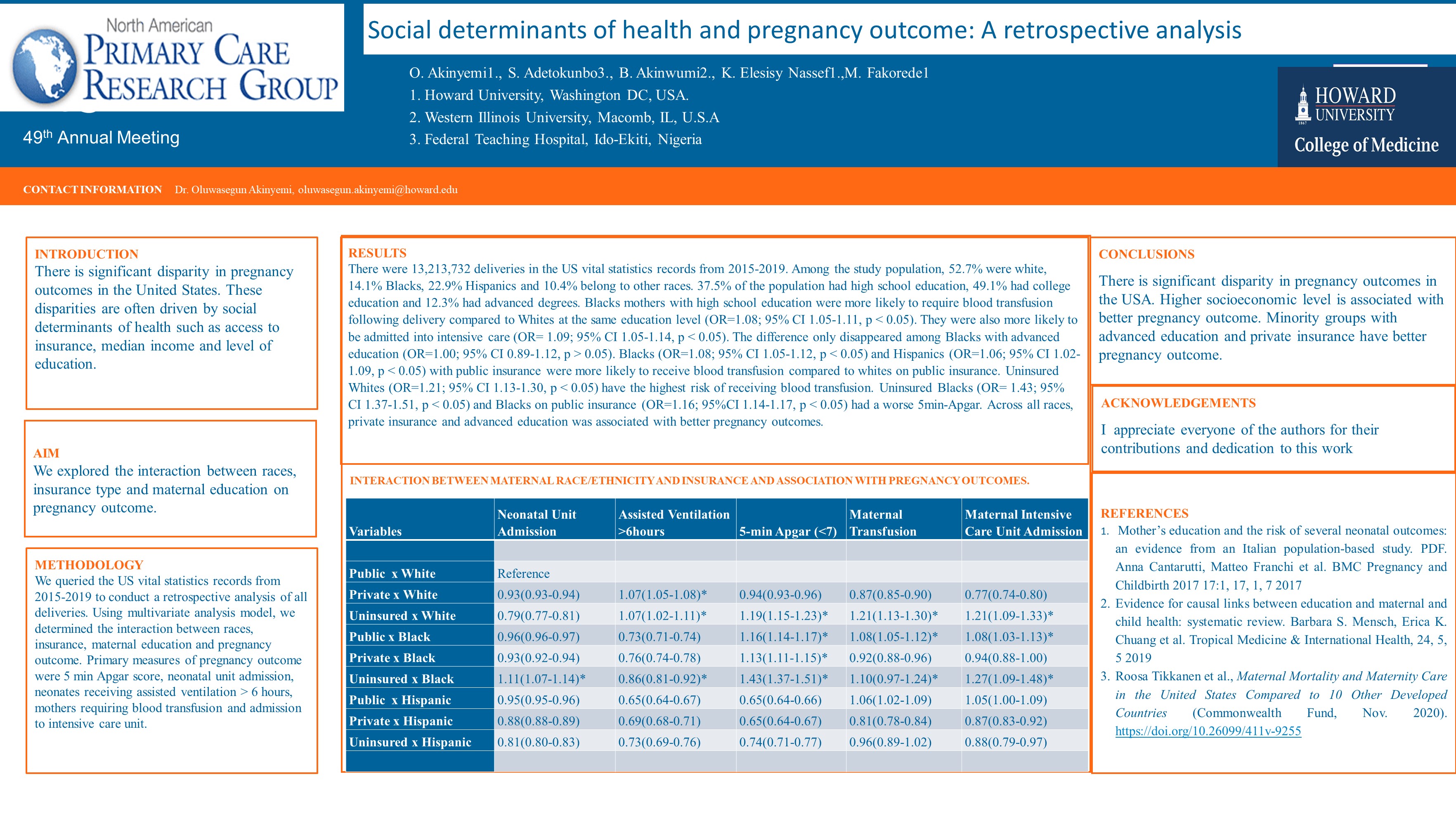SRFP091: Social determinants of health and pregnancy outcome: A retrospective analysis
Oluwasegun Akinyemi, MD, MS, FMCOG; Mary Fakorede, MD; Kindha Elleissy Nasef, BS; Stella Adetokunbo; BOLARINWA AKINWUMI
Abstract
Aim: We explore the interaction between races, insurance type and maternal education on pregnancy outcome.
Methods: We queried the US vital statistics records from 2015-2019 to conduct a retrospective analysis of all deliveries. Using multivariate analysis model, we determined the interaction between races, insurance, maternal education and pregnancy outcome. Primary measures of pregnancy outcome were 5 min Apgar score, neonatal unit admission, neonates receiving assisted ventilation > 6 hours, mothers requiring blood transfusion and admission to intensive care unit.
Result: There were 13,213,732 deliveries in the US vital statistics records from 2015-2019. Among the study population, 52.7% were white, 14.1% blacks, 22.9% Hispanics and 10.4% belong to other races. 37.5% of the population had high school education, 49.1% had college education and 12.3% had advanced degrees. Blacks mothers with high school education were more likely to require blood transfusion following delivery compared to Whites at the same education level (OR=1.08; 95% CI 1.05-1.11, p < 0.05). They were also more likely to be admitted into intensive care (OR= 1.09; 95% CI 1.05-1.14, p < 0.05). The difference only disappeared among blacks with advanced education (OR=1.00; 95% CI 0.89-1.12, p > 0.05). Blacks (OR=1.08; 95% CI 1.05-1.12, p < 0.05) and Hispanics (OR=1.06; 95% CI 1.02-1.09, p < 0.05) with public insurance were more likely to receive blood transfusion compared to whites on public insurance. Uninsured Whites (OR=1.21; 95% CI 1.13-1.30, p < 0.05) have the highest risk of receiving blood transfusion. Uninsured Blacks (OR= 1.43; 95% CI 1.37-1.51, p < 0.05) and Blacks on public insurance (OR=1.16; 95%CI 1.14-1.17, p < 0.05) had a worse 5min-Apgar. Across all races, private insurance and advanced education was associated with better pregnancy outcomes.
Conclusion: There is significant disparity in pregnancy outcomes in the USA. Higher socioeconomic level is associated with better pregnancy outcome. Minority groups with advanced education and private insurance have better pregnancy outcome.

Jack Westfall
jwestfall@aafp.org 11/21/2021Thanks for your terrific work on this research. Hope we can connect.